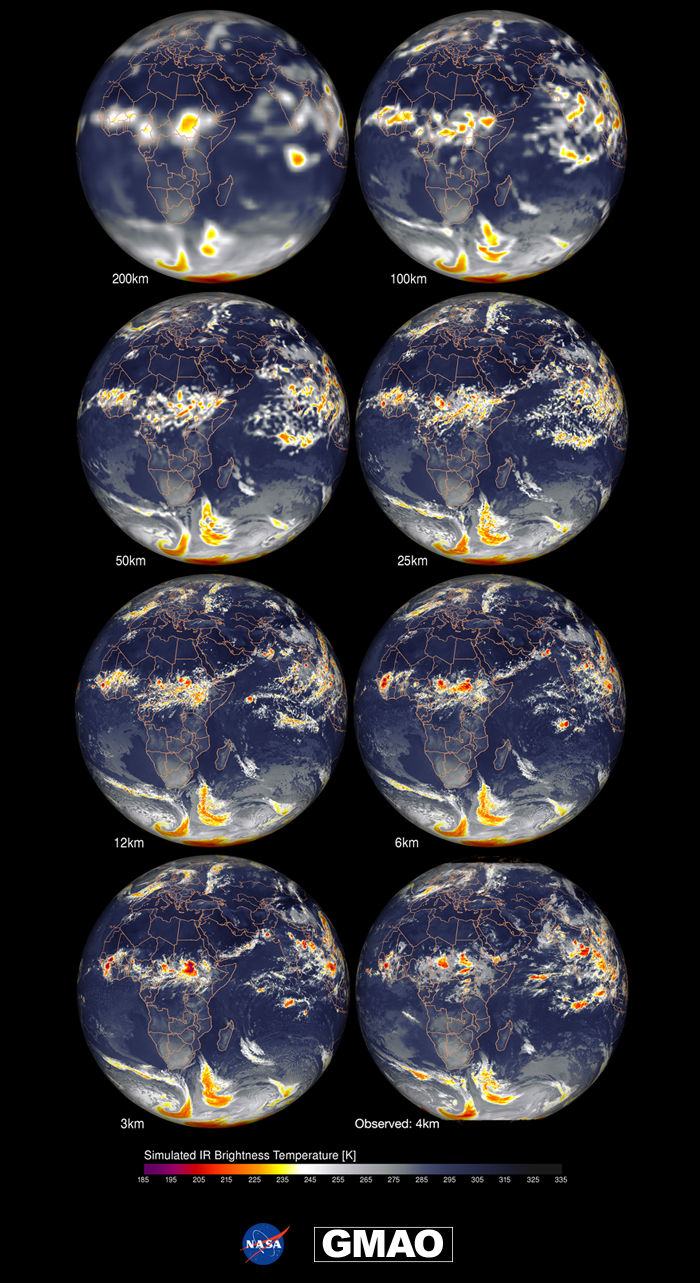A Scale-Aware Representation of Convection in the GEOS Model
The recent implementations of the Grell-Freitas Convection Parameterization and the University of Washington shallow cumulus parameterization, along with the evolving development of the finite-volume cubed-sphere (FV3) non-hydrostatic dynamical core, have led to a unique scale-aware capability for the GEOS model. These snapshots, from August 4, 2016, are taken three days in to a sequence of 40-day simulations at a cascade of horizontal resolutions with GEOS; they demonstrate the representation of convective clouds in GEOS from simulated infrared (IR) brightness temperatures using the COSP ISCCP satellite simulator compared with observed data [lower right].
This snapshot highlights the development of large, organized areas of deep convection over equatorial Africa depicted by colder IR temperatures [orange and red colors]. Warmer shallow clouds [white] can be seen over the southern Atlantic and Indian oceans. Baroclinic waves can be seen in the Southern Ocean, with a mature cyclone developed to the South of Africa. At horizontal resolutions of 200- to 25-km [the top row] deep convection in the model occurs with a 2:1 ratio of parameterized convective processes to resolved-scale processes. As resolutions increase to 3-km the GEOS model seamlessly inverts this ratio to 1:2 as resolved-scale processes begin to capture the physical mechanisms leading to the formation of these convective systems.
These updated physical parameterizations are scheduled for evaluation in the GEOS forward processing (FP) system with implementation estimated for summer of 2019.
References:
Freitas, S.R., et al., 2018: Assessing the Grell-Freitas Convection Parameterization in the NASA GEOS Modeling System. J. Advances Mod. Earth Sys., 10, 1266–1289. https://doi.org/10.1029/2017MS001251
Arnold, N.P., and W.M. Putman, 2018: Nonrotating Convective Self‐Aggregation in a Limited Area AGCM. J. Advances Mod. Earth Sys., 10, 1029–1046. https://doi.org/10.1002/2017MS001218
FV3 documentation: https://www.gfdl.noaa.gov/fv3/fv3-documentation-and-references/


